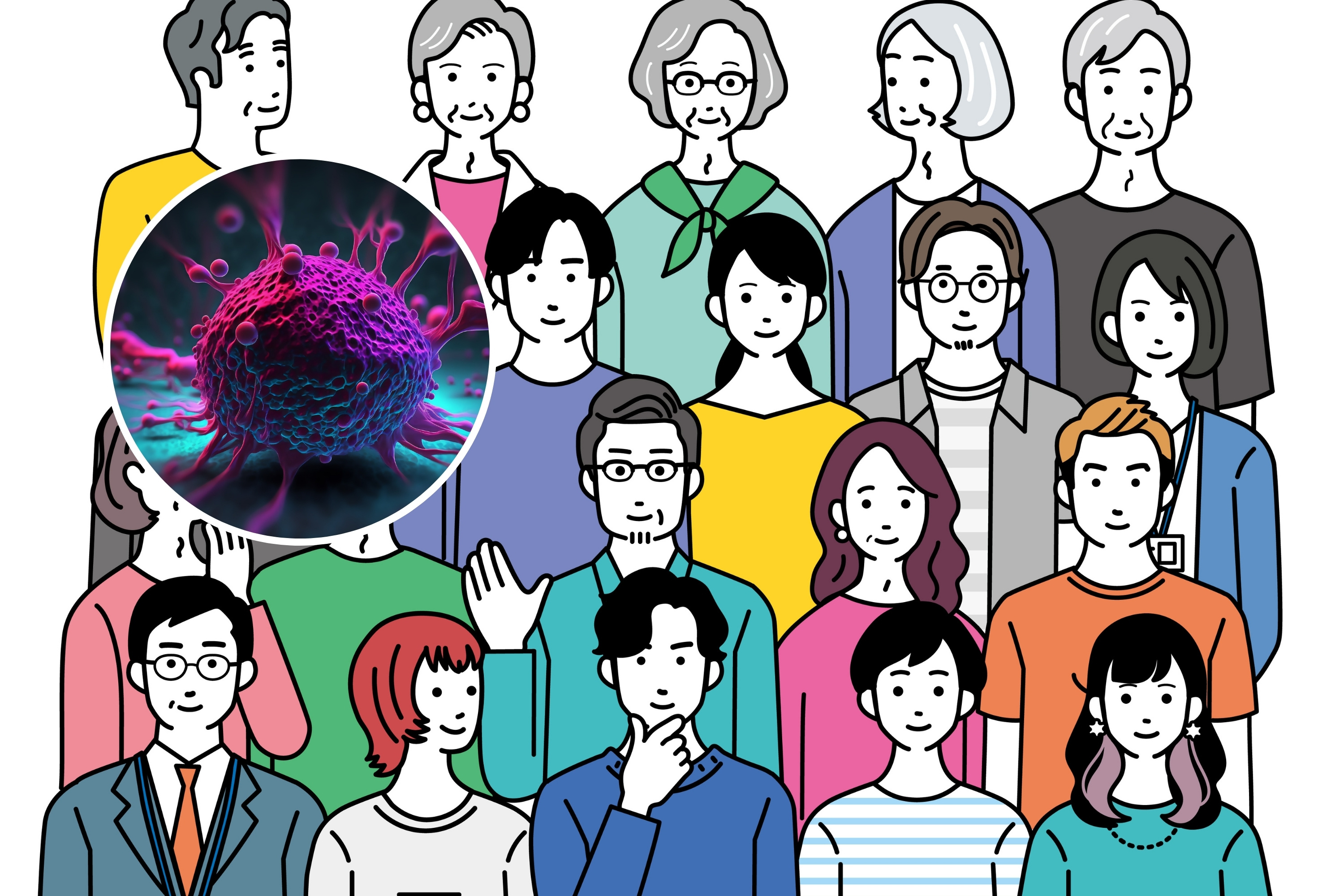A new study from the National Institutes of Health (NIH) has found that the incidence of 14 different cancer types increased among people under the age of 50.
Newsweek spoke with leading oncologists about new findings published in Cancer Discovery, which revealed that between 2010 and 2019, more than two million cancer cases were diagnosed in people aged 15 to 49 in the United States.
Several cancers are becoming more common in young adults, including testicular cancer, melanoma, and cervical cancer. Blood-related cancers like B-cell lymphomas and plasma cell neoplasms are also on the rise, along with rare types such as bone and joint cancers, stomach cancer and skin lymphomas.

CIPhotos / matsu5/iStock / Getty Images Plus
Dr. Steven Grossman, a clinician and researcher with expertise in gastrointestinal cancers, told Newsweek: “What is most concerning about the rise of cancers typical of older adults in younger populations is that the symptoms might be ignored until the cancer presents at a later stage, where it is more difficult to treat and cure.
“This is especially worrisome for colorectal cancer and pancreatic cancer, which are particularly difficult to treat if they are discovered at a more advanced stage.”
Cancers Typically Linked to Older Adults
The study, released on May 8, found the most significant upticks were observed in cancers such as female breast, colorectal, kidney, uterine, and pancreatic—many of which are commonly associated with older adults but are now appearing more frequently in patients in their 20s, 30s and 40s.
While the overall cancer death rate in younger adults has not risen in tandem, troubling increases in colorectal and uterine cancer deaths have been reported. Some cancers like melanoma, cervical, stomach, myeloma, and bone and joint cancers showed increases only in younger populations.
“We don’t know yet the root cause of the increasing incidence of cancer in younger adults but science points to what we would call environmental factors,” said Grossman, the executive medical director of the Hoag Family Cancer Institute in Southern California.

shironosov/iStock / Getty Images Plus
Gender Disparities in Early-Onset Cancers
The study found that 63.4 percent of early-onset cancers occurred in women. Among women, the most common types were breast, thyroid, and melanoma, while among men, the leading early-onset cancers were colorectal, testicular, and melanoma.
Pashtoon Kasi, a gastrointestinal cancer specialist, told Newsweek that medics previously believed the two major factors for cancer risk were aging and a genetic predisposition. However, they are now increasingly focused on the role of lifestyle and environmental factors.
The American Cancer Society (ACS) states that around 5 to 10 percent of cancers are caused by inherited genetic mutations—not the cancer itself, but an abnormal gene passed down from a parent that increases cancer risk.
This includes lifestyle factors such as a lack of exercise, obesity, alcohol use, and other elements of the diet.
Grossman added: “The scientific community also generally believes that exposure to environmental carcinogens, which could include air or water pollution, likely contributes at some level to this phenomenon. That research, however, is still ongoing.”
Lifestyle Factors and Cancer Risk
The ACS states that at least 18 percent of all cancers and around 16 percent of cancer-related deaths are linked to excess body weight, lack of physical activity, alcohol use and poor diet.
Many of these cases may be preventable by following a well-balanced diet consisting of plenty of fruits, vegetables, and whole grains, while limiting or eliminating red and processed meats, which are classified as carcinogens.
The study found that obesity is linked to seven types of cancer that are rising among younger adults: colorectal, kidney, uterine, pancreatic, stomach (cardia), cervical cancers and myeloma (a type of blood cancer). In 2019, it was estimated that obesity contributed to as few as 5.3 percent of colorectal cancer cases and as many as 53.1 percent of uterine cancer cases.

unomat/iStock / Getty Images Plus
“The obesity piece does not explain the full story since a lot of our young onset patients are very active and healthy otherwise,” said Kasi, the Medical Director of GI Medical Oncology at City of Hope Orange County.
Being physically fit and getting 150–300 minutes of moderate-intensity or 75–150 minutes of vigorous-intensity activity each week may decrease the chances of cancer and other health problems, along with maintaining a healthy weight.
Kasi added: “We’re still learning about the impact of all these factors – genetics, environment, aging, and lifestyle. One thing that is certain is that our knowledge of cancer development is evolving in the 21st century.
“Particularly, how these environmental factors and diet affect the ‘microbiome’ of our body and how those interplays in the development of these cancers is of interest. Expanding cancer research efforts focused on younger individuals is a critical factor.”
Mortality Rates and Screening Concerns
Cancer death rates have not significantly increased and have generally declined. From 2010 to 2020, deaths among 15–29-year-olds fell by nearly 2 percent per year, then remained stable. Rates also dropped for 30–39 and 40–49 age groups, with declines continuing until around 2018–2022, when they leveled off. This suggests better detection and treatment are saving more lives.
Dr. Amy Laughlin, a medical oncologist at the Orlando Health Cancer Institute who specializes in breast cancer and cancer genetics, explained why screening age hasn’t been reduced.
She said: “If a group has a small chance of cancer, then when a screening test is positive, the greatest likelihood is that it is a false positive—causing anxiety, biopsies, more tests and cost for no reason.
“For example, in an older, higher-risk population you may need to do 100 breast biopsies to find one breast cancer, but in a younger, lower-risk population you may have to do 400 breast biopsies to find one cancer. Imagine the cost and anxiety we put those 399 women through.”
Do you have a tip on a health story that Newsweek should be covering? Do you have a question about cancer? Let us know via health@newsweek.com.
Reference
Shiels, M. S., Haque, A. T., Berrington de González, A., Camargo, M. C., Clarke, M. A., Davis Lynn, B. C., Engels, E. A., Freedman, N. D., Gierach, G. L., Hofmann, J. N., Jones, R. R., Loftfield, E., Sinha, R., Morton, L. M., & Chanock, S. J. (2025). Trends in Cancer Incidence and Mortality Rates in Early-Onset and Older-Onset Age Groups in the United States, 2010–2019. Cancer Discovery. https://doi.org/10.1158/2159-8290.CD-24-1678
(Except for the headline, this story has not been edited by PostX News and is published from a syndicated feed.)

